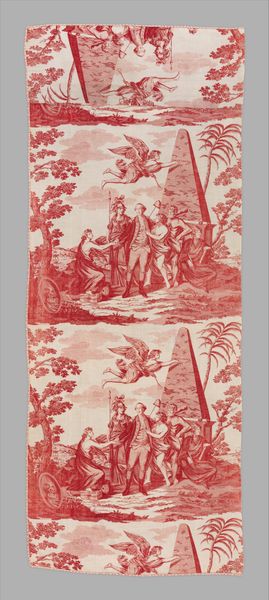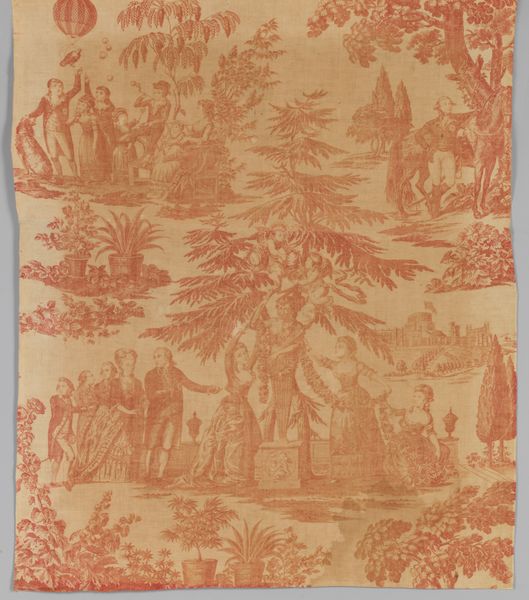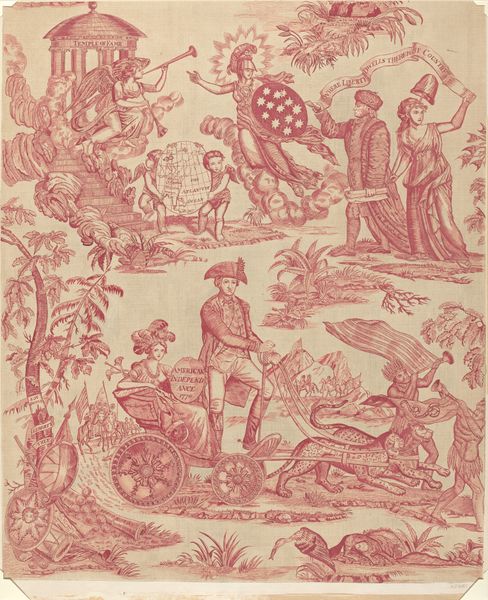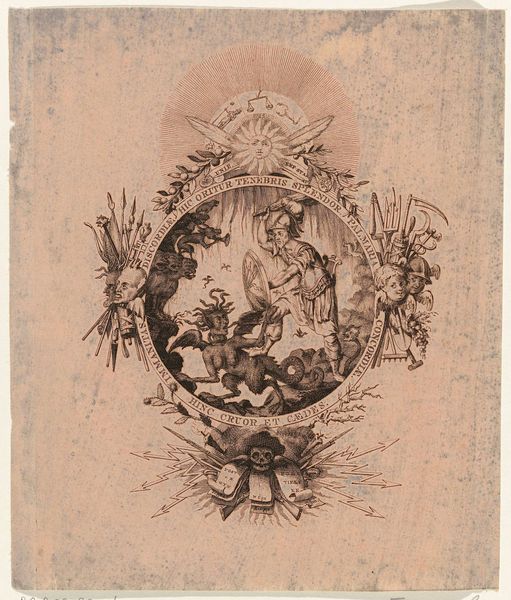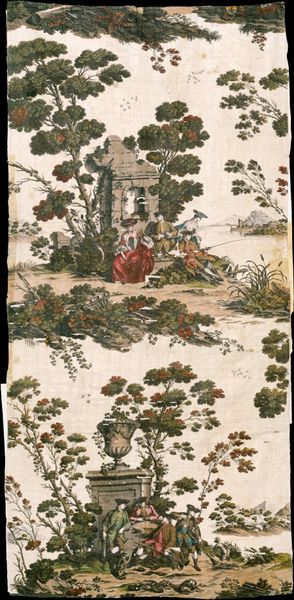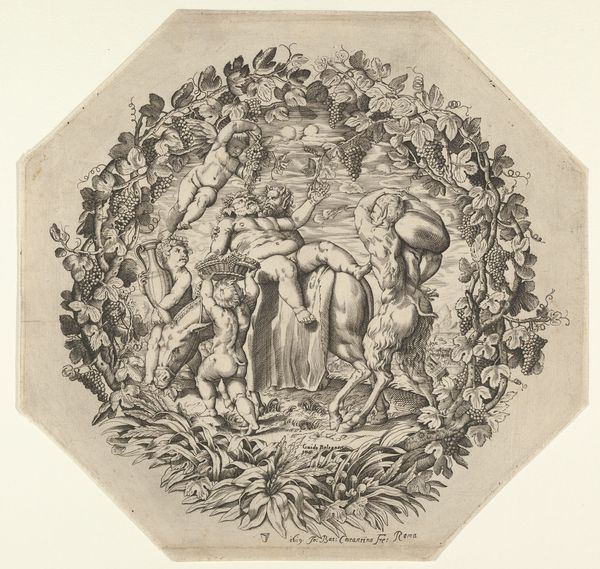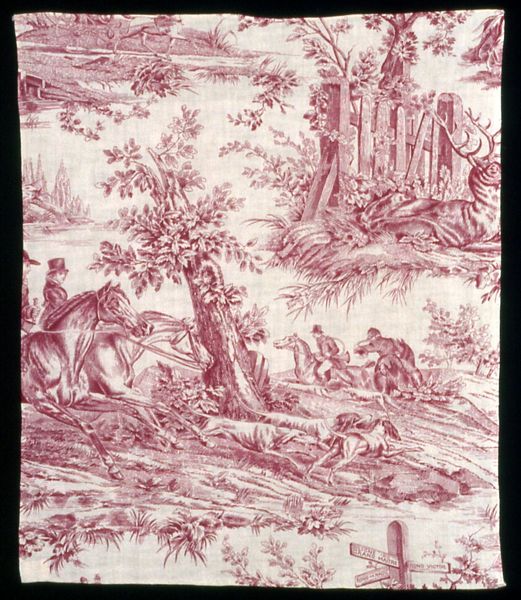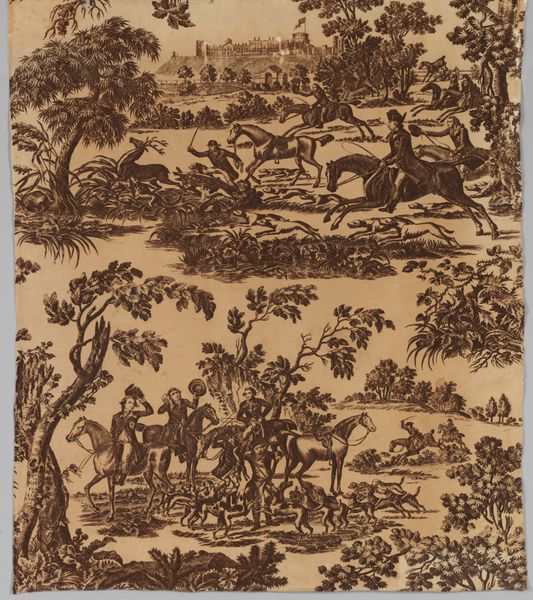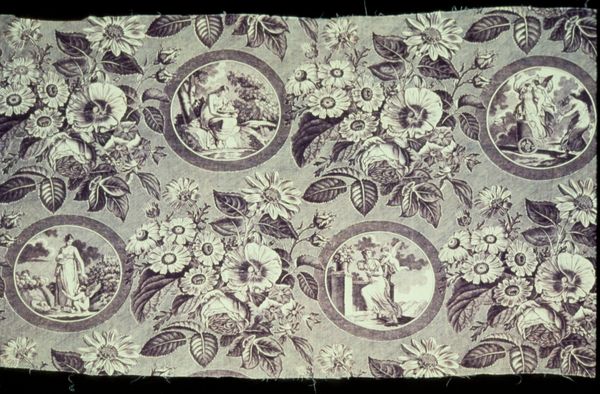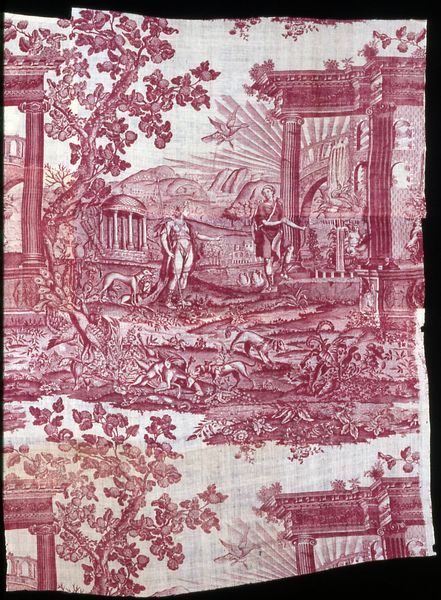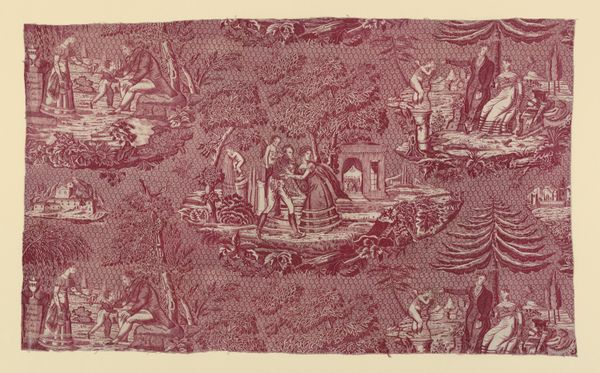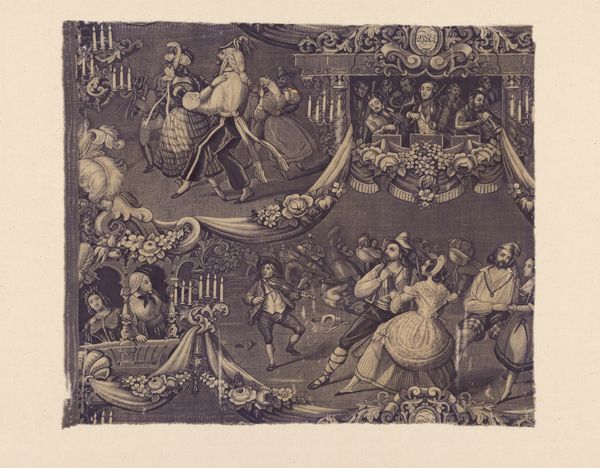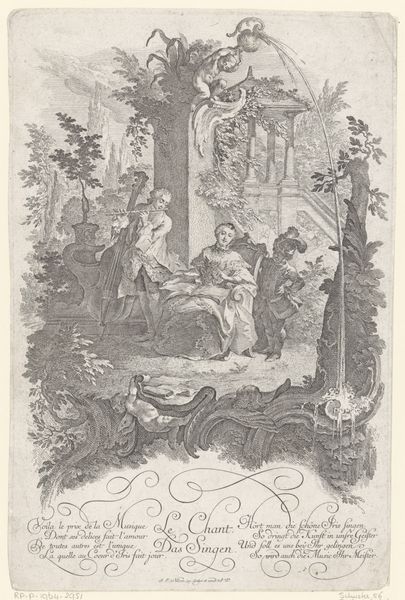
print, textile, woodcut
#
linocut
# print
#
landscape
#
textile
#
figuration
#
linocut print
#
romanticism
#
woodcut
#
genre-painting
#
history-painting
Dimensions: 12 5/8 x 18in. (32.1 x 45.7cm)
Copyright: Public Domain
Editor: This is a fragment of a textile, "Toile Fragment" from the 19th century, currently housed at the Minneapolis Institute of Art. The rosy-red print depicts scenes of children, framed by stylized foliage. There's a strange contrast between what seems like playful innocence and something more rigid, almost military. What strikes you about it? Curator: I find the textile's structure and interplay of scenes particularly compelling. Note how the artist has employed a limited palette, relying on the contrast between the figure and the ground to create a sense of depth. The repetition of the floral border, acting as a visual frame, leads the eye from one tableau to the next. Editor: The scenes themselves feel quite separate, almost like two distinct vignettes placed one above the other. Does that division contribute to the overall meaning? Curator: Precisely. It prompts us to consider the relationship between the images. Consider how the shapes in each scene create a dialogue with the other. The rhythmic movement in the dancing scene above is answered by the static parade of children in the lower register. Note also the sharp angles used in the figuration which further emphasize their individual position within the composition. Editor: It's fascinating how much can be gleaned from just the visual construction itself, without necessarily knowing the specific historical context. Curator: Indeed. We can appreciate how this textile, through its form and design elements, reveals the formal interests of its creator and era, even without detailed historical knowledge. This intense formal arrangement produces an object both beautiful and strange. Editor: Thank you, that gave me a new appreciation for the details in the textile. Curator: I'm delighted to share this experience with you. I appreciate how even without any information about the historical content we can examine the piece as a product of art history.
Comments
No comments
Be the first to comment and join the conversation on the ultimate creative platform.
